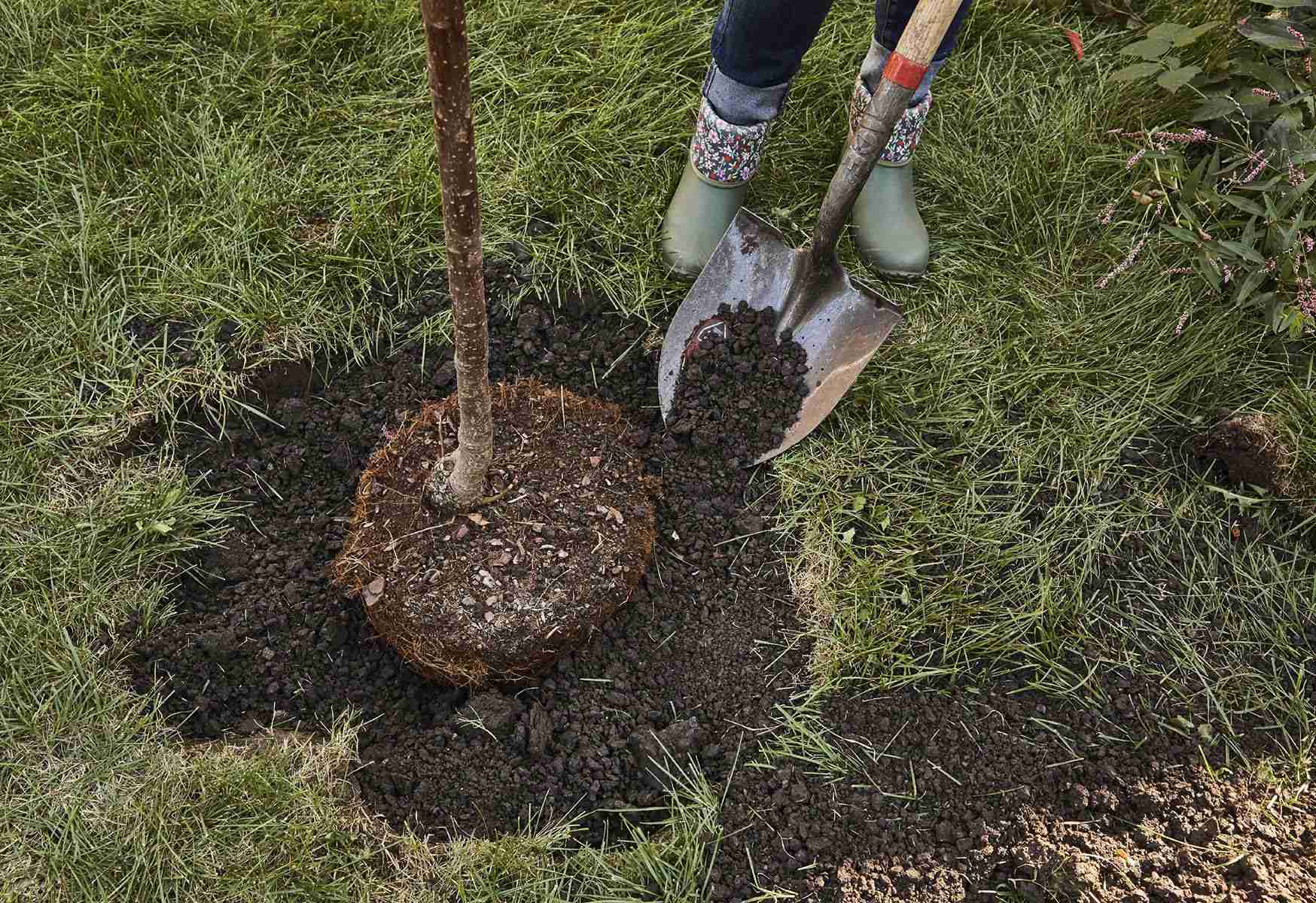Home>Types of Gardening>Ornamental Gardening>When Should You Wire A Bonsai Tree


Ornamental Gardening
When Should You Wire A Bonsai Tree
Modified: January 22, 2024
Learn when to wire a bonsai tree in our comprehensive guide on ornamental gardening. Discover the best techniques and timing for shaping these delicate miniature trees.
(Many of the links in this article redirect to a specific reviewed product. Your purchase of these products through affiliate links helps to generate commission for Chicagolandgardening.com, at no extra cost. Learn more)
Table of Contents
Introduction
Welcome to the world of ornamental gardening, where beauty and creativity flourish. One particular aspect of this art form that has captivated enthusiasts worldwide is the cultivation and shaping of bonsai trees. Bonsai, a Japanese term meaning ‘tray planting,’ is the practice of growing miniature trees in containers, meticulously shaping them to resemble fully-grown trees found in nature.
Every bonsai enthusiast knows that the key to creating a visually stunning bonsai lies in the careful manipulation of its branches and trunk. This is where wiring, a technique dating back centuries, becomes a vital tool in the bonsai artist’s arsenal. By strategically positioning wires around the branches and trunk, it is possible to guide their growth, giving the bonsai its quintessential twisted and gnarled appearance.
However, knowing when to wire a bonsai tree is equally important as understanding the technique itself. To achieve optimal results, one must take several factors into consideration, including the species of the tree, its age, health, and the desired outcome.
This article will serve as your comprehensive guide to understanding when and how to wire a bonsai tree. We will explore the significance of wiring, the appropriateness of using this technique, signs that indicate a bonsai tree needs wiring, and a step-by-step guide to help you wire your bonsai tree like a pro.
Understanding Bonsai Trees
Before we delve into the details of wiring bonsai trees, let’s take a moment to understand the essence of these miniature works of art. Bonsai trees are not simply shrunken versions of their full-sized counterparts; they are a representation of nature in a confined space.
The art of bonsai traces its roots back thousands of years to ancient China, where it was developed as a way to bring the beauty of nature inside the home. Over time, it spread to Japan and gained immense popularity, eventually becoming an integral part of Japanese culture.
A bonsai tree embodies various elements of nature, from its intricate roots and elegantly twisted trunk to its carefully pruned foliage and tiny, perfectly proportioned branches. The goal is to create a tree that captures the spirit of a full-sized tree found in the wild, but in a scaled-down form.
However, the aesthetic appeal of bonsai trees goes beyond their physical characteristics. They are also a symbol of harmony, patience, and respect for nature. The act of caring for and shaping a bonsai tree requires dedication, mindfulness, and a deep understanding of its unique needs.
It is essential to recognize that bonsai trees are living organisms that require regular care, including watering, fertilizing, and occasional pruning. Each species of tree has specific requirements that must be met to ensure its healthy growth and development.
Moreover, bonsai trees are not limited to traditional, well-known tree species. Virtually any woody plant can be trained and cultivated into a bonsai tree, allowing for endless possibilities and artistic interpretations.
By comprehending the essence of bonsai trees and the dedication required to nurture them, we can better appreciate the importance of techniques like wiring in shaping these miniature masterpieces.
The Importance of Wiring
Wiring plays a crucial role in the art of bonsai, allowing artists to sculpt and shape the tree according to their vision. By carefully wrapping wire around the branches and trunk, practitioners can guide their growth and create the desired aesthetic form.
One of the key benefits of wiring is that it enables the artist to manipulate the tree’s structure. By gently bending the branches and trunk into the desired positions, a bonsai tree can be shaped to mimic the graceful curves and natural asymmetry of full-sized trees found in nature. The result is a bonsai tree that exudes a sense of age, character, and harmony.
Through the intricate process of wiring, the bonsai artist has the ability to emphasize certain features of the tree, such as the trunk’s movement, a cascading branch, or the delicate foliage. Wiring allows for a level of control and precision that would be impossible to achieve through pruning alone.
Another advantage of wiring is that it enables the artist to correct any structural flaws or imbalances in the tree’s growth. By gently manipulating the branches and trunk, the artist can redirect their growth and create a more balanced and aesthetically pleasing bonsai tree.
While the visual appeal of wiring is undeniable, it’s important to note that the technique goes beyond pure aesthetics. By guiding the growth of the branches, wiring also promotes the overall health and vigor of the tree. By ensuring proper light exposure and airflow, wiring can prevent the development of weak or crowded branches, allowing the tree to thrive.
It’s important to approach wiring with precision and care. Improperly applied wires can cause damage to the delicate bark, restrict the flow of nutrients, or even lead to the death of the branch. Therefore, it’s crucial to learn the correct techniques and use appropriate materials to minimize any potential harm to the tree.
Ultimately, the art of wiring not only transforms a bonsai tree into a visual masterpiece but also grants the artist the ability to sculpt and shape their creative vision, resulting in a living work of art that reflects the beauty of nature.
Appropriateness of Wiring
While wiring is a common technique used in bonsai cultivation, it is essential to understand that not all trees and situations call for the use of wiring. The appropriateness of wiring depends on various factors, including the species of the tree, its age, health, and the desired outcome.
Firstly, some tree species are more suitable for wiring than others. Certain species, such as pine trees, have inherently flexible branches and respond well to wiring. On the other hand, species with brittle or rigid branches may not tolerate wiring as easily. It is essential to research and understand the characteristics of the specific tree species you are working with to determine the appropriateness of using wiring techniques.
Age and health are also crucial considerations when deciding to wire a bonsai tree. Younger trees, with more pliable branches, tend to respond better to wiring. Older trees with thicker branches may require more caution and care when applying wires. Additionally, if a tree is weak or in poor health, it may not be suitable for wiring, as it could further stress the tree and impede its recovery.
The desired outcome plays a significant role in determining whether wiring is appropriate. If the goal is to create a windswept or cascading style bonsai, wiring is often necessary to achieve the desired shape. However, if the intention is to maintain a more natural, untouched appearance, wiring may not be necessary and could even detract from the tree’s intrinsic beauty.
It is important to exercise discretion and judgment when considering the appropriateness of wiring. Consultation with experienced bonsai practitioners or experts can provide valuable insights and guidance based on their knowledge and experience with specific tree species and styles.
Ultimately, the appropriateness of wiring is a nuanced decision that requires an understanding of the tree’s characteristics, health, and desired outcome. Taking these factors into account ensures that you are making the right decision for the well-being and aesthetic development of your bonsai tree.
When to Wire a Bonsai Tree
Knowing the right time to wire a bonsai tree is crucial to ensure optimal results and the health of the tree. While there is no one-size-fits-all answer, certain guidelines can help determine when it is appropriate to use wiring techniques.
The best time to wire a bonsai tree is during its period of active growth. For most tree species, this typically occurs in the spring and early summer. During this time, the tree is actively producing new shoots and branches, which are more flexible and responsive to wiring. Avoid wiring during dormant periods or when the tree is under stress, as it may be more susceptible to damage.
Age also plays a role in determining when to wire a bonsai tree. Younger trees, with more pliable and supple branches, can be wired earlier in their growing season. Older trees with thicker and more rigid branches may require more caution and patience, as their branches may be less flexible and more prone to snapping or damage during the wiring process.
Observing the growth pattern and timing of the specific tree species is essential. Some trees tend to produce new growth earlier or later in the season, so it’s important to be mindful of their natural growth patterns when deciding when to apply wiring.
Additionally, it is important to consider the overall health and vigor of the tree before wiring. A strong and healthy tree will be better equipped to handle the stress of wiring and recover more quickly. If the tree is weak, recovering from a period of neglect, or experiencing any health issues, it is advisable to wait until it has regained its strength before considering wiring.
Lastly, consider the specific design and aesthetic goals for your bonsai. If you have a specific shape or style in mind, planning ahead and wiring during the appropriate time will allow you to mold the tree into the desired form more effectively.
Remember to approach wiring with care and precision to minimize any potential harm to the tree. Remove wires promptly once the desired shape has been achieved to prevent them from cutting into the bark and causing damage as the tree continues to grow.
By taking into account the tree’s growth season, age, health, and desired design, you can determine the appropriate time to wire a bonsai tree, ensuring optimum results and a healthy, aesthetically pleasing miniature masterpiece.
Signs That a Bonsai Tree Needs Wiring
Recognizing when a bonsai tree needs wiring is essential for maintaining its desired shape and structure. Here are some signs to look out for that indicate it may be time to apply wiring techniques:
1. Unbalanced or Weak Structure
If you notice that your bonsai tree has an unbalanced or weak structure, with branches growing in unwanted directions or lacking proper distribution, it may be a sign that wiring is needed. Wiring can help guide the growth of branches and create a more harmonious and visually pleasing tree structure.
2. Lack of Desired Form or Style
If your bonsai tree does not have the desired form or style, or if it is not exhibiting the aesthetic qualities you are striving for, wiring can help reshape and refine its appearance. Whether it’s creating elegant bends, defining graceful curves, or adjusting branch angles, wiring allows for greater control and precision in shaping the tree according to your artistic vision.
3. Overgrown Branches or Long Internodes
If your bonsai tree has overly long branches or internodes, wiring can be used to redirect the growth and create a more compact and refined tree silhouette. By gently bending the branches and rebalancing the design, you can maintain a more proportional and refined bonsai form.
4. Branches Interfering with Each Other
When branches begin to grow in a way that results in crowding or interference, it is a clear sign that wiring is needed to redirect their growth. Wiring allows you to create space between the branches, improving light penetration and airflow, which in turn ensures the overall health and vitality of the tree.
5. Desiring More Artistic Expression
Sometimes, you may simply feel the need to exercise more artistic expression and elevate the visual impact of your bonsai tree. Wiring can be used as a tool to push the creative boundaries and transform your bonsai into an even more captivating and unique work of living art.
It is important to assess the tree’s overall health and vitality before wiring. If the tree is weak, stressed, or recovering from any issues, it is advisable to wait until it has regained its strength before applying wiring techniques. Additionally, always use caution, precision, and appropriate techniques when wiring to minimize any potential harm to the tree.
By recognizing the signs that indicate a bonsai tree needs wiring, you can intervene at the right time to shape and refine its structure, ultimately achieving a visually striking and aesthetically pleasing miniature masterpiece.
Step-by-Step Guide to Wiring a Bonsai Tree
Wiring a bonsai tree requires careful consideration and precision. Here is a step-by-step guide to help you navigate the process:
1. Choose the Right Wire
Selecting the appropriate wire is crucial. The wire should be flexible enough to bend without snapping, but sturdy enough to hold its shape. Copper or aluminum wire is commonly used for bonsai wiring. Choose a thickness that matches the size of the branches you intend to wire.
2. Prepare the Tree
Before applying wires, examine the tree and plan out the desired shape and structure. Prune any unwanted branches or foliage, and remove any wires that may still be in place from a previous wiring session.
3. Start at the Base
Begin wiring from the base of the trunk and work your way up to the finer branches. This ensures that the wire provides support and stability to the entire tree structure.
4. Wrap the Wire in a Spiral
Start wrapping the wire around the selected branch or trunk in a spiral motion. Ensure that the wire is snug, but not too tight, to avoid damaging the bark. Leave a small gap between each revolution to allow for growth.
5. Guide the Branches
As you wrap the wire, gently guide the branches into the desired position. Bend them slowly and carefully to create the desired shape and structure. Take your time and make adjustments as necessary.
6. Avoid Crossing Wires
Be cautious not to let the wires cross or overlap, as this can damage the bark and restrict the flow of nutrients. Ensure that each wire is correctly positioned and does not intersect with others.
7. Repeat the Process
Continue wrapping and guiding the branches with wire until you have achieved the desired shape and structure for your bonsai tree. Pay attention to detail and make any necessary adjustments as you progress.
8. Regularly Monitor the Tree
Keep a close eye on the bonsai tree as it continues to grow. Check the wires regularly to ensure they are not cutting into the bark. If the wires start to dig into the branches, remove and reapply them with more appropriate tension.
9. Remove the Wires
Once the branches have set into the desired position, usually after several months or when the tree has reached its designated growth cycle, remove the wires carefully. It is crucial to remove the wire before it starts cutting into the bark and causing damage.
Remember that wiring is just one aspect of bonsai cultivation. Regular maintenance, including watering, pruning, and repotting, will help ensure the health and vitality of your bonsai tree.
Following this step-by-step guide will assist you in effectively wiring your bonsai tree and achieving the desired shape and structure. With practice and patience, you will be able to master this technique and create stunning bonsai creations that are a true reflection of your artistic vision.
Conclusion
Wiring is an essential technique in the art of bonsai, allowing enthusiasts to shape and sculpt their trees into miniature masterpieces. Understanding the appropriateness of wiring, knowing when to wire a bonsai tree, and recognizing the signs that indicate it needs wiring are all crucial components of successful bonsai cultivation.
By carefully selecting the right wire and following a step-by-step guide, you can effectively wire your bonsai tree, creating the desired shape and structure. However, it is important to exercise caution and mindfulness throughout the process to minimize any potential harm to the tree.
Remember that bonsai is a living art form, requiring regular care and maintenance to ensure the tree’s overall health and vitality. Wiring is just one aspect of bonsai cultivation, and it should be combined with other practices such as watering, pruning, and repotting to maintain the tree’s beauty and longevity.
Embrace the artistry and expressiveness of bonsai trees through wiring. Let your creativity flourish as you shape and guide the growth of your bonsai, capturing the essence of nature in a miniature form.
So, embark on this enchanting journey of bonsai cultivation, immerse yourself in the intricate techniques of wiring, and enjoy the fulfillment of seeing your bonsai tree transform into a captivating living work of art.





